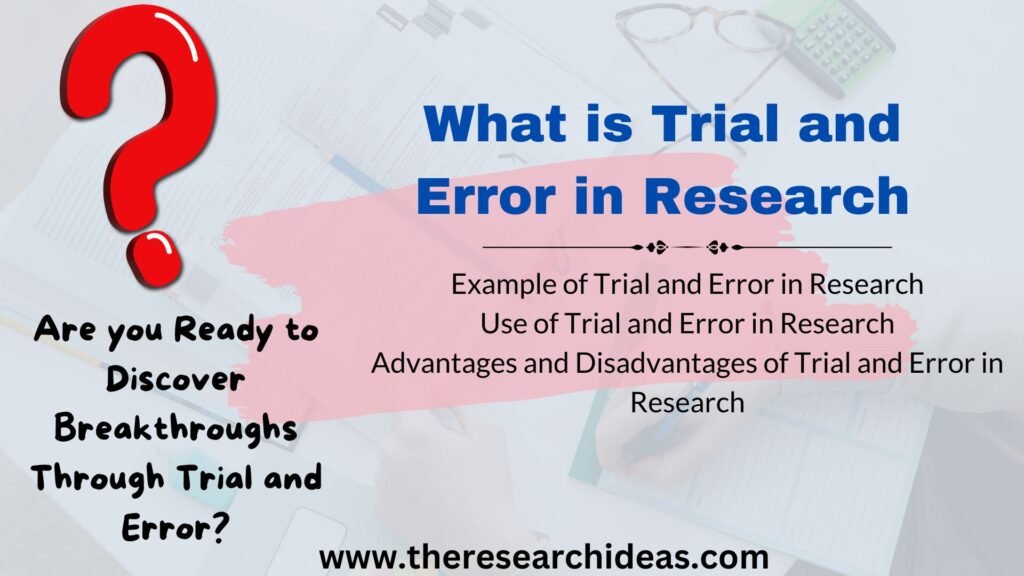What is Trial and Error in Research?
Trial and error is a problem-solving method in research where multiple attempts are made to achieve a desired outcome. Each attempt may involve trying different approaches, making adjustments based on previous outcomes, and eliminating unsuccessful methods. This process is repeated until a satisfactory solution is found. It is particularly useful in situations where a researcher does not have a clear understanding of how to solve a problem or when there is no established theory or method to guide the process.

In research, trial and error is not a systematic or structured method. Instead, it relies on experimentation and learning from mistakes. This approach is often used in exploratory phases of research or when testing new ideas, products, or procedures.
Example of Trial and Error in Research
In educational psychology, a researcher may use trial and error to find the most effective teaching strategy for students with learning disabilities. The researcher might test several teaching techniques—such as visual aids, interactive games, or hands-on learning—and evaluate their impact on student engagement and comprehension. After each trial, adjustments are made based on student feedback and performance. Over time, the researcher identifies which combination of methods works best for this specific group of students.
Use of Trial and Error in Research
Problem-solving in early-stage research: Trial and error is commonly used in exploratory research when there is no clear path or established knowledge about how to achieve a goal. For example, in artificial intelligence development, trial and error methods (like reinforcement learning) are often applied where algorithms learn from their mistakes.
Example: A researcher developing a machine-learning model might test various algorithms to see which one performs best for a given task, adjusting parameters after each trial.
Innovative product testing: In product development, trial and error is used to refine new products or features.
Example: A company developing a new smartphone might use trial and error to test different screen materials for durability. They may repeatedly test materials until one that meets their durability standards is found.
Improvement of existing methods: Researchers might apply trial and error to improve an existing method or process, especially in fields like engineering or medicine, where complex systems often require iterative testing.
Example: Engineers working on improving the efficiency of solar panels might try different materials and designs through trial and error to see which yields the best results in energy absorption.
Advantages and Disadvantages of Trial and Error in Research
| Advantages | Disadvantages |
|---|---|
| Allows for adjustments based on immediate feedback, making it adaptable to complex situations. | Repeated trials can take a long time, especially when searching for an effective solution. |
| Useful in real-world scenarios where no clear answer exists, such as in educational or community settings. | May require significant resources (time, money, labor) for multiple unsuccessful attempts. |
| Researchers can explore a variety of approaches, fostering creativity in problem-solving. | The process can lack scientific rigor, as it is based on experimentation rather than hypothesis-driven research. |
| Enables tailoring of solutions to individual or group needs based on responses. | If none of the trials yield a successful outcome, the research may end without clear results. |
| Can be applied even when little is known about the problem, helping to generate initial insights. | Researchers may inadvertently favor certain approaches, leading to biased or skewed results. |
| Can be modified in real-time based on evolving circumstances or participant feedback. | Requires continuous investment in trial setups, which can be costly or labor-intensive. |
Take Away Words
Trial and error is a valuable approach in research when uncertainty exists or innovation is needed. Although it is not the most efficient method, it encourages experimentation and learning from failures, leading to creative solutions and discoveries.